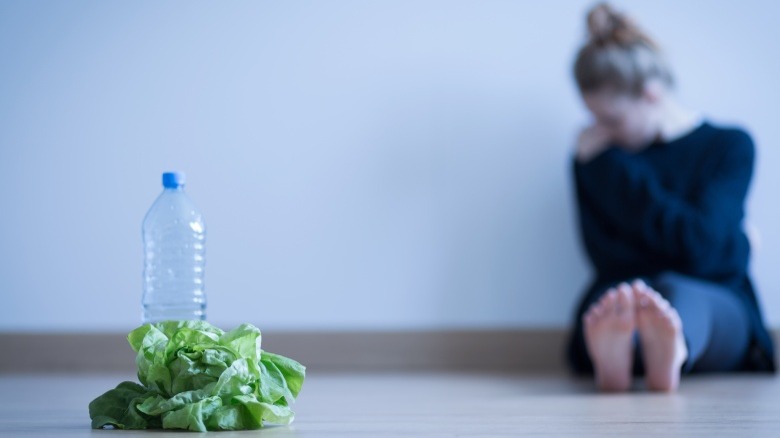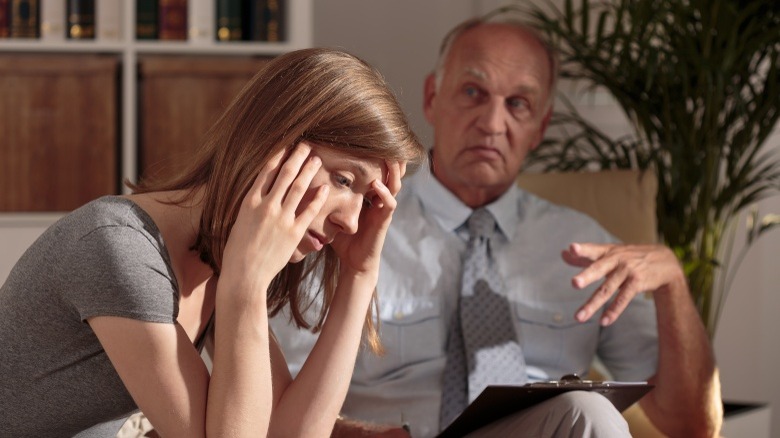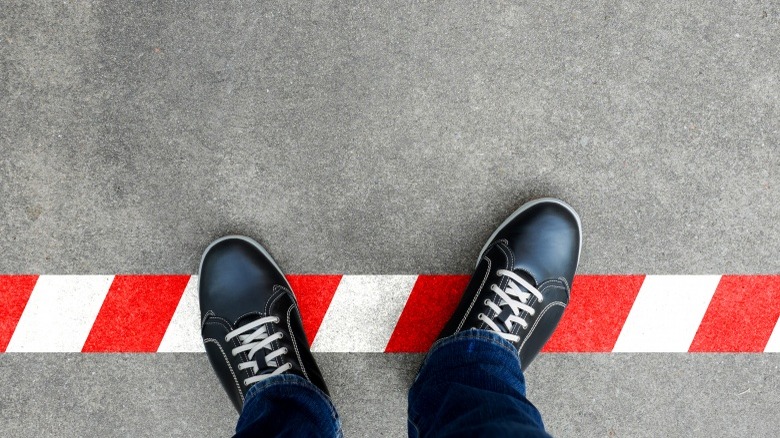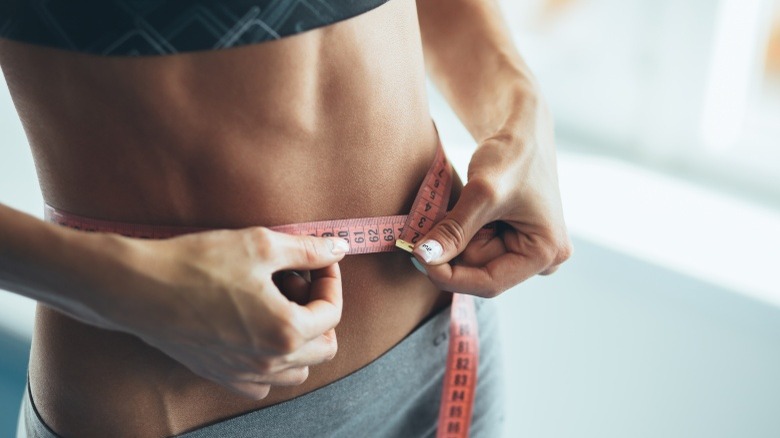Can Being 'Too Healthy' Be Unhealthy?
We're all taught that healthy eating is important not only for fitness, but for living a long life. For many of us, that means eating whole foods and trying to stay away from processed junk.
On any given day, I eat bowlfuls of organic vegetables topped with pasture-raised eggs, I make grass-fed beef meatballs (mixed with liver from pastured cows for good measure), down smoothies packed with superfoods, and sip homemade bone broth that has been simmered for no less than 48 hours. Most people consider me a very healthy person. But some believe my diet is not healthy at all. That it is actually a telltale sign of disordered eating. Not anorexia or bulimia, but orthorexia, which is a sign that being too healthy has become unhealthy.
What is orthorexia?
The term orthorexia was created by Dr. Steven Bratman in 1997. It literally translates to "fixation on righteous eating." Ortho meaning "right" and orexis meaning appetite or diet. It was not originally intended to be a diagnosis. Bratman began to use the term half-heartedly, a sort of "tease therapy" with patients who took their diets to the extreme. Over time, however, he realized he was on to something.
"For people with orthorexia, eating healthily has become an extreme, obsessive, psychologically limiting and sometimes physically dangerous disorder, related to but quite distinct from anorexia," says Bratman.
Dieting on its own does not assume this condition. Bratman makes that very clear. Veganism, gluten-free dieters, even the health-conscious label readers like me, do not an orthorexic make. There's a line. Not an incredibly clear one, but it seems it stands somewhere between what's good for you, and what's "pure" for you.
"People with orthorexia constantly struggle against feelings of being unclean or polluted by what they have eaten, no matter how carefully they monitor their diet," he added.
Is it a 'real' disorder?
A mental disorder is defined by the Diagnostic and Statistical Manual of Mental Disorders (DSM) as "a syndrome characterized by clinically significant disturbance in an individual's cognition, emotion regulation, or behavior that reflects a dysfunction in the psychological, biological, or developmental processes underlying mental functioning."
Orthorexia is not yet recognized by the DSM. Or by the American Psychiatric Association. Even Bratman admits giving yet another set of human behaviors a pathological label is not contributing to the solution. But that hasn't stopped practitioners from recognizing these specific human behaviors as a real issue – one they see walk through their doors every day.
Licensed Clinical Psychologist, Certified Weight Management Specialist, and Certified Nutrition Coach, Dr. Candice Seti says what she barely knew existed 10 years ago, now makes up a good portion of her practice. "Clinically, orthorexia is not a diagnosable eating disorder, but it seems to be increasing in prevalence and frequency enough that I believe it will become a clinical disorder in the near future," she said.
Who is prone to it?
In my very scientific method of polling 12 different practitioners about the signs and symptoms of orthorexia, I found 100 percent of them to say some version of the Type-A personality.
Dr. Megan Williams is a board-certified family physician and obesity medicine specialist who sees orthorexic patients on a regular basis, and sees a lot of similarities to orthorexia's sister disorder, anorexia. "These are patients who are used to doing well – academically and personally – and hold themselves to a very exacting standard," she said.
Wellness Coach, Kaila Prins of Perfoming Women was sick for 10 years with obsessive healthy eating before she met the qualifications for an anorexia diagnosis. For her, what started with the Paleo diet, turned into an extreme low-carb diet, then eventually became a ketogenic diet (a very high-fat, low-carb diet that forces the body to burn fat rather than carbohydrates). She even found herself trying diets like the Gut and Psychology Syndrome Diet (GAPS), intended to treat conditions like leaky gut syndrome, autism, and ADHD, when she had no reason to do so. She fit the bill perfectly for the orthorexic Type- A.
"We, the worriers, are the vanguard of the healthy and clean eating movements, because we're constantly trying to self-diagnose, control our futures, and be the best role models," says Prins.
What are the signs and symptoms?
On the surface, many of the signs and symptoms of orthorexia are things we've all been taught are good food practices.
Shop the perimeters. Eat organic, whole and unprocessed foods. Avoid too much sugar. Eat more meals at home or prepare meals to take on-the-go.
The problem is when these guidelines become rules, and the rules become unbreakable. A telltale sign is when the diet escalates. The "good" list gets shorter. The "bad" list just keeps growing. And sometimes, you tack on more diet theories to the already-rigid one you're currently following.
Dr. Williams explains that orthorexia can look different for different people. She's seen an older pre-diabetes patient who became so strict with her diet she documented every morsel of food that went into her body – including her carbohydrates intake from vegetables. Equally as disturbing, a high school athlete who avoided food-related social environments and admitted to raiding her parent's kitchen cabinets to throw away food that did not meet her criteria.
Why is this happening?
Some say it's a backlash to the obesity epidemic. We've all heard the statistics. More than one-third (36.5 percent) of US adults are obese. More than 29 million people suffer from diabetes. Oh, and let's not forget heart disease. One in four people die of it in the United States every year.
"The obesity epidemic has certainly given rise to more focus on health, wellness, and diet, which is a wonderful thing. But it is also very easy to take that too far — as is the case with orthorexia," says Seti.
But the rise in obesity alone is not necessarily the reason people are going to dieting extremes. According to many practitioners, there's a catalyst. It exists in our homes, in our hands, pretty much everywhere we go.
Social media influence
Social media is healthy eating's megaphone. According to one study, 50 percent of consumers learn about food through Twitter and Facebook. Another 40 percent say they learn about it via websites, apps or blogs.
Heather Lehman, MS, author of Don't Eat It. DEAL With It! Your Guidebook On How To STOP Eating Your Emotions, did her master's thesis on eating disorders and now runs a corporate wellness company, Overcoming U. She has conducted over 3,000 health coaching sessions where she says, addressing orthorexia is the most common goal. "Orthorexia is interesting because there is a pride in it, whereas anorexia, bulimia and binge-eating disorders have such shame. Pics of food on Pinterest, [Facebook] and Twitter show the world how well you're doing," says Lehman.
Transformational life coach, podcaster, author and blogger, Maddy Moon, is surprisingly very open to the fact that social media can and does contribute to disordered eating in our society. "Anybody can write about anything, and someone who's easily triggered could stumble upon it and continue their disordered relationship with food with this new information and fuel for the fire," says Moon.
A reformed "control seeking maniac" who would bring her food scale to parties and indulge in an Emergen-C packet once every two weeks as her "cheat meal," Moon knows the dangers of taking healthy eating too far. So much so that she has dedicated her life to empowering women to break down their self-defeating patterns and orthorexic tendencies.
"I do think that yes, it's easier for people to continue to cultivate their obsession with healthy eating, dieting, restriction or kitchen perfection because they have access to it 24/7 at the tips of their fingers."
Is all dieting bad?
Sure, there are some extreme diets out there. From cabbage soup diet, to grapefruit, people are willing to do (and eat) anything to lose weight. But the diets in question here are the ones that start for good reason. People may become vegans for animal rights, gluten-free to heal their digestive woes, and paleo to treat autoimmune conditions.
That's why Shannon Werner, PhD, started paleo. A transformational nutrition coach and systems biologist, she first learned about the paleo diet for gut-healing as a graduate student. But it wasn't until she contracted a GI bug in Mexico that she started following a paleo protocol out of necessity rather than ideology.
"As a scientist, I had to know why my health was crumbling. I soon became my own n=1 experiment, and was obsessed with poring over literature, articles, and any information that was available that could help me understand my condition," says Werner.
In her opinion, it's not the diets themselves that are dangerous. It's the way we all use Google to self-diagnose. "We are bombarded with social media posts about the need to use (or avoid) specific ingredients, but these [posts] never touch on the holistic interplay between mind, body, and spirit, and that we are all bioindividuals who assimilate and tolerate foods in a unique way."
So what can we do to stay healthy, but not 'too' healthy?
Psychotherapist and eating disorder specialist, Carolyn Karoll has a very clear answer. She reminds her patients food is just as much about pleasure as it is about function. Food, after all, is an emotional experience.
Karoll also says we must be much more trusting of our body and genetic blueprint — know that it will crave what it needs, and you need to listen to it. "What is healthy is not some grand definition. We get it wrong when we say BMI or vitamin C. We have to incorporate food into our life more naturally. And stop being so hard on ourselves," says Karoll.








